Under the production of Bones Film, a subsidiary studio of Studio Bones, the Gachiakuta anime premiere was officially held at Anime Expo 2025 on Friday, July 4, 2025, at 10 am PT. The exclusive global premiere consisted of the first two episodes, giving fans a glimpse of the highly anticipated title from the Summer 2025 anime lineup.
The two-episode World Takeover version was streamed without the opening and ending theme credits, which will be revealed during the show's official broadcast on Japanese networks and international streaming platforms on July 6, 2025. Even without the theme songs, the Gachiakuta anime premiere took fans on a rollercoaster journey and showed the shocking development in Rudo's life.
Every aspect, from the consistently fluid animation, vivid art quality, to voice acting and the expert usage of CGI, contributed to the success of the Gachiakuta anime premiere. The episodes were bathed in rich detail, with every frame reminding us of the iconic panels from Kei Urana's manga. Undoubtedly, Bones Film's production surpassed all expectations, leaving us to wonder- Is this the next big thing from Bones after My Hero Academia?
Gachiakuta anime premiere review: Evaluating Bones Film's treatment of the narrative from Kei Urana's manga
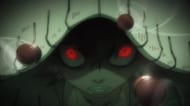
When author Kei Urana and graffiti designer Hideyoshi Ando's dark fantasy manga received the anime adaptation, there was a sense of unease about how Bones would portray Rudo's story. The teaser wasn't enough to give clarity about the production, except for the gritty backgrounds, which were truly on point.
Eventually, we discovered that Studio Bones' subsidiary studio, Bones Film, would be in charge of the series' animation production. Afterward, the official staff released a few trailers, and all our doubts were thrown into the deepest abyss. Now, the Gachiakuta anime premiere at Anime Expo 2025 proved that we weren't wrong; the series is destined for success.
The special two-episode premiere covered chapters 1-3 from Kei Urana's manga, showing Rudo's descent into the abyss and his encounter with the Trash Beasts. The episode also captured Rudo's emotional angst after he was framed for a crime he didn't commit. His desperation and the sheer desire to send his accusers to hell were the hallmark of the premiere.
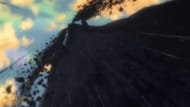
However, that's not all. Gachiakuta anime premiere probed into the power dynamics between the rich and the poor, existing in the Sphere. Beginning with the haunting epigraph from the manga's chapter 1, the premiere navigated the discrepancies between the rich and the "tribesfolk," who dwelled in slums.
The Sphere was anything but a paradise, where the poor or the needy ones were pushed to the edge of the world. It was literally an "edge," as criminals were thrown into the abyss that lay after the edge. It was called Hell, from which no voices were heard. Rudo, an orphaned boy, passed his days dwelling in the slums and collecting "trash" left by the rich folks.
The Gachiakuta anime premiere explored Rudo's life as he lived with his foster parent, Regto. However, on a fine day, he was framed for a brutal crime, which landed him a death sentence. It has already been seen in the trailer before how Rudo was thrown into the abyss. The premiere captured Rudo's fall to the abyss's depth unbelievably well, with a touch of CGI at play.
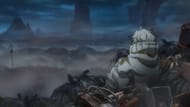
The first episode covered the entirety of chapter 1, while the second episode adapted the next two chapters, as seen in the Gachiakuta anime premiere. The second installment saw Rudo face creatures known as Trash Beasts and encounter Enjin, a Cleaner. Seeing Rudo's potential, Enjin offered him a job at the Cleaners.
As evident, the Gachiakuta anime premiere covered what we already knew from the numerous trailers so far. The new aspects were, obviously, the movements of the Trash Beasts, the crime for which Rudo was falsely accused, and the power disparity between the rich and the poor. Additionally, the premiere was perfectly paced, without any sense of urgency.
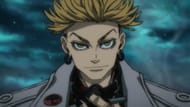
The episodes faithfully covered Kei Urana's manga, extending a few key frames for animation purposes. In this aspect, Bones Film has truly done justice to the original manga. Although the first episode didn't feature plenty of action, it set the groundwork for episode 2, which was an action fest.
Even though the Gachiakuta anime premiere didn't have the same intensity as My Hero Academia's fights so far, it was entertaining. The premiere proved that the narrative has depth to challenge the anime adaptation of Kohei Horikoshi's manga.
Gachiakuta anime premiere review: An overall criticism of Bones Film's production

From the beginning, the Gachiakuta anime premiere proved that the staff at Bones Films were passionate about the project. The production studio breathed life into the memorable panels of Kei Urana's manga and gave them a vibrancy. Every frame exuded rich texture, reminiscent of the original manga series.
The character models were exactly how Urana had drawn them in her manga. However, Gachiakuta anime slightly missed the exaggerated expressions, which were more in the source material. Those exaggerations provide the series with its essence. Yet, the anime has done a decent job of portraying the characters in animation format.
Satoshi Ishino, serving as the character designer and chief animation director, supervised the character art well. The close-up shots of Rudo and other characters looked decent. Urana's illustrations are by no means easy to adapt in an anime format, simply because of the funky designs and the over-the-top expressions.
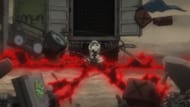
One of the key highlights for me in the Gachiakuta anime premiere was the colors used for the characters and the backgrounds. Naomi Nakano (Stella) did a fascinating job on the series' color design, with Masataka Ikegami managing the frames as the photography director. Furthermore, Yusa Ito, as the art director, supervised the backgrounds and the character art well.
Likewise, Arisa Hoshina showcased her talent as the Vital Instrument designer with Enjin's Umbrella. The umbrella had a hint of CGI used in it. In this respect, Takuma Miyake, the 3DCG director, contributed well to the episodes. Most importantly, Fumihiko Suganuma managed the first two episodes' production expertly. The script composition for the Gachiakuta anime premiere was also on point by Hiroshi Seko.
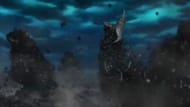
However, the major talking point of the Gachiakuta anime premiere was the Trash Beasts. While using CGI for Trash Beasts might seem a controversial choice, it was inevitable, considering how detailed they are in Kei Urana's manga. Urana's depiction of the Trash Beasts is at times inconsistent in the manga. Therefore, it was always going to be a challenge to showcase them in an animation format.
Thankfully, Eiji Yamamori didn't disappoint by adapting Kei Urana's Trash Beast designs for the anime. As many fans may know, Eiji-san has recently worked in similar roles in the Trigun Stampede and Godzilla Singular Point. Therefore, she has already developed experience in designing such Kaiju-type creatures. The CGI Trash Beasts moved well, except in a few minor areas, where they seemed jarring.
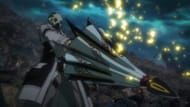
It wasn't a 100% neat CGI usage by any means, but they lent the series its uniqueness. The Trash Beasts looked menacing and real, adding the horror elements to the series. Faced against such gigantic beasts, Rudo truly looked helpless. Furthermore, the Ground's design was on point, as the studio captured the desolation of the place.
Continuing with the discussion on the CGI used in the Gachiakuta anime premiere, the CGI usage extended beyond the Trash Beasts. For example, the studio used CGI during Rudo's fall from the Sphere, when trash oozed from the pipelines. Likewise, we could see CGI on Enjin's Vital Instrument. However, they were finely integrated/blended with the 2D animation. As a result, they didn't seem jarring.
Lastly, credit must be given to the music composer, Taku Iwasaki, and the sound director, Fumiyuki Goh, for enriching the premiere with exciting OSTs. The funky rock genre suited the anime's mood and tone. Moreover, the subtle change in voice when Rudo spoke through the gas mask in the second episode was also done neatly. Overall, the premiere perfectly captured the show's essence through music.
Conclusion
With all said and done, the Gachiakuta anime premiere has shown signs of promise that the series can become the next My Hero Academia from Bones. The subsidiary studio has passionately produced the beginning of Rudo's journey, with sublime animation quality and exhilarating OSTs. Although the CGI aspects seemed slightly off at certain points, it was nonetheless a stellar premiere.
Also read:
- Leviathan anime review: Studio Orange breathes life into a moving war narrative
- Nyaight of the Living Cat episode 1 review: An action-packed premiere about cat pandemic you need to watch
- Dandadan season 2 episode 1 review: Science SARU turns things creepy with the Kito Family
